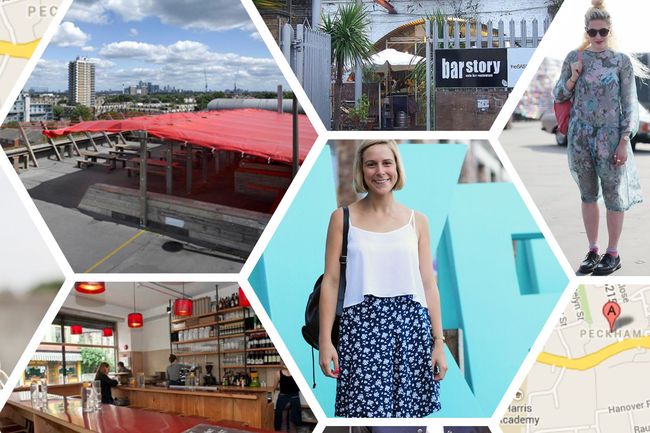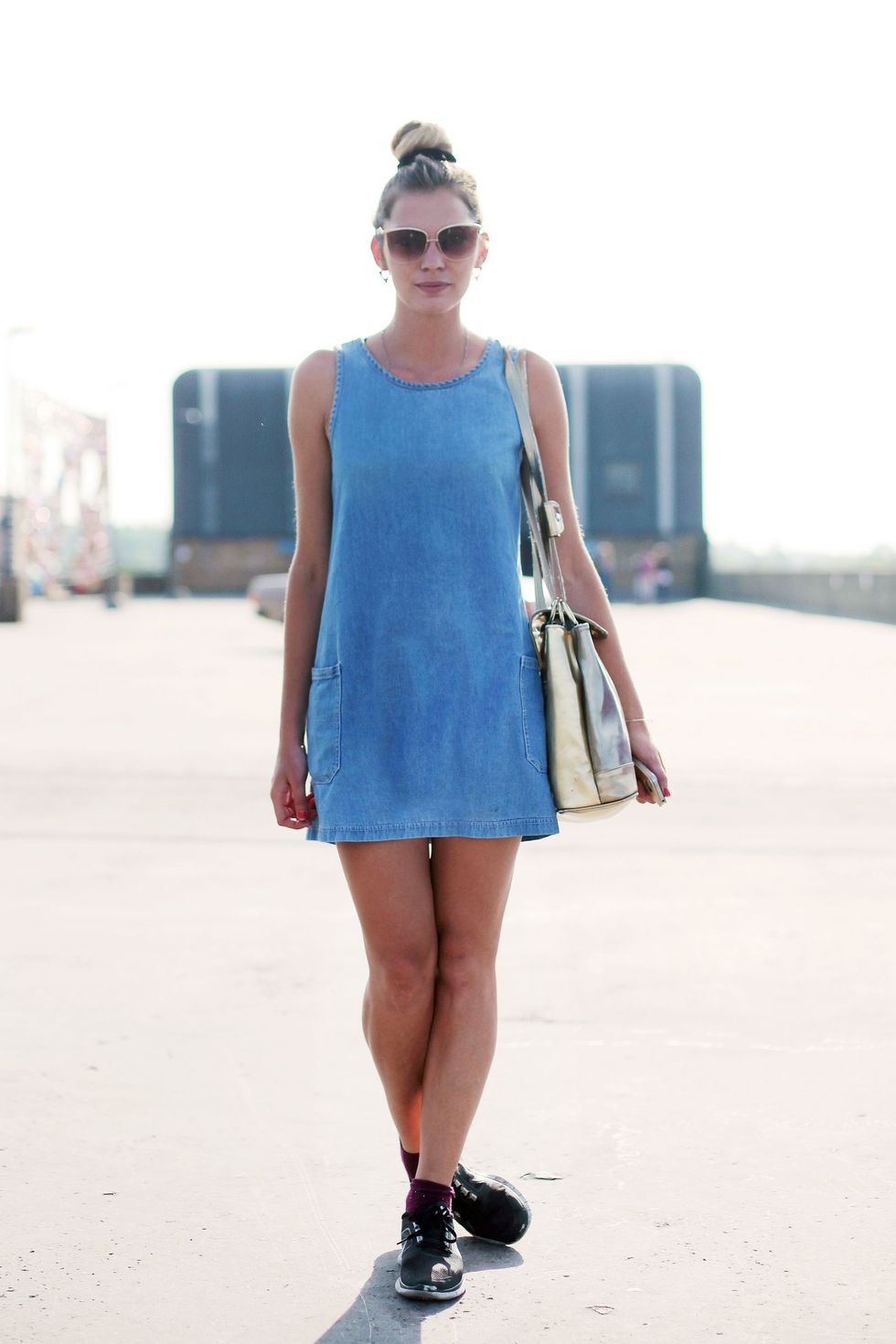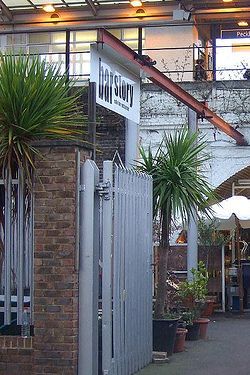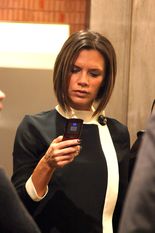
South East London’s cooler than Shoreditch – just don’t tell anyone
When I first set foot in New Cross, ten years ago, word around Goldsmiths, the infamously hip university where I was a student, was that South East London was the city’s next cool hot-spot. East London could do one. But back then, when you’d have been laughed out of run-down local pub, the Goldsmiths Tavern, for ordering an Aperol Spritz, it seemed more likely that this was just part of the university’s schtick, trotted out like a party line to lure in students who hoped to become as great as alumni including Damien Hirst and Mary Quant who’d come before them.
But in 2011, when that very same pub played host to Meat Easy, the pop-up that would serve New Cross Negronis, evolve into most-queued-for restaurant Meat Liquor and single-handedly throw petrol in London’s burger-craze fire, somehow, it started to seem like the rumours could be true. Suddenly the best-dressed-people along New Cross Road weren’t just spilling out of the local halls of residence but were travelling down the East London line to see what was up. Perhaps, as a sign behind Jam Circus’ bar in nearby Brockley has precociously proclaimed for nearly a decade, South East London could become ‘cooler than Shoreditch’.
East London is by no means over, and remains a strong centre for design, but as street style and catwalk photographer Anthea Simms comments, the prominence of Pret a Manger where you’d once have found the bars-to-be-in along Shoreditch High Street, means that ‘it's time for a new trendy area to emerge’.
‘The creative set has to have a new hub that's affordable and fresh’, she continued, and as one of the last areas of London that’s both cheap and accessible to creative hot-spots in both the city’s centre and East, it makes sense that SE postcodes are becoming an even more thriving hive of designers and artists than they previously have been. ‘If there's an unused space, you can bet something exciting and involving will evolve from it, bringing the local communities together to embrace the occasion’, commented local jewellery designer Imogen Belfield.
"Once it becomes the new Shoreditch and the bankers move in where are we going to move to?"
Indeed, Louisa Lau, editor of Lustandfoundmag.com, creative director of luxury travel website Black Tomato, and SE dweller, agrees that East London’s out-of-control prices, versus still just affordable living in the South is key to the area’s recent explosion. ‘I think young designers and artists are moving or staying in South East London purely for financial reasons. East London is not what it was 10-15 years ago, and while it's still got a fashion 'scene', rent prices have soared, which has forced most students and graduate designers to live and start their studios in South London’. Like the Young British Artists who made once-cheap East London cool, it’s this new wave of creatives who could be held responsible for the recently increased strength of the South East London buzz. She continues ‘I haven't noticed any of the established East London studios such as House of Holland, Christopher Kane, Mary Katrantzou, JW Anderson migrating south but I can definitely see the new generation of designers starting a community in the Peckham, Camberwell, New Cross areas’.
Style in South London has always been strong – Goldsmiths and Camberwell College of Arts, as well as a vibrant cultural mix of African, Caribbean and Vietnamese communities have seen to that for years, plus, let us not forget Florence Welch was wafting around this area, in which she grew up, long before she was famous – but with increased attention on this part of London, its nuances are certainly seeming more prominent. ‘I guess the only way I can describe the typical Camberwell 'look' is Dalston-hipster but less try-hard’ considered Lau. ‘It’s more effortless and DIY’. ‘Street style is not just about designers and young professionals though’, she continued’. ‘It's equally as important to observe teenagers and mature style in an area, as they inevitably influence the creatives. I love walking around on a Sunday afternoon to see all African ladies in their Sunday best, usually a pastel coloured dress suit with a matching hat, shoes and bag’.
Of course, where a creative scene is thriving, a strong social one will also grow. Designer, boutique owner and South London veteran Madeleine Moxham is keen to point out that the area already has ‘such a brilliant array of restaurants and bars including Silk Road, South London Gallery, FM Mangal, The Crooked Well and Buddha Jazz’, while fashion blogger Isabelle O’Carroll recently listed places in Peckham alone that give Dalston's offering a run for its money. Plus, Moxham notes, ‘a lot of the people in these places come especially from East London’. And it’s not just the established venues that are attracting the kind of crowd you’re used to seeing on street style blogs. Petra Barran, founder of KERB food market, was drawn to ‘energy coming up from the streets’ in the area, and indeed when the event popped up in Peckham twice over the last month, a young and vibrant crowd were drawn to it. Similarly, the notably increased size of the queue that snakes around Frank’s, a roof-top bar that pops up annually above one of Peckham’s multi-story car-parks, this year, is testament alone to how much of a destination the area has become, and when we sent a street style photographer there the other week, it was clear that the crowd were a cool one. The newly-opened Peckham Refreshment Rooms, kitted out with all the hipster signatures, from exposed lightbulbs to distressed wood, may still be slightly under the radar, but with a glowing review from renowned food critic Jay Rayner already under its belt, it’s unlikely to stay that way.
The problem with the rising popularity of an area however, is that by its very nature, cool loses all its appeal as soon as it’s universally recognised. Lau quite rightly points out that ‘I think it's quite hard to define an area as 'cool' as some might say once an area has become gentrified, it is no longer cool’, and Peckham Print Studio, who have recently collaborated with fashion brand Sunspel, declined to comment for this piece when asked for their two-pennies worth on the area’s increased cache, citing the fact that they ‘do not agree with the current discourse surrounding this’. Indeed Moxham also worries that ‘once it becomes the new Shoreditch and the bankers move in where are we going to move to?’
It’s without a doubt true the focus on South East London has sharpened over the last year, but perhaps now is a key time in ensuring we remember what we liked about it in the first place. Barran praised the owners of Peckham event space The Bussey Building, where KERB has been held twice recently, noting that ‘they’re involved with loads of different projects – they want to see that space become synonymous with creativity and things happening in the area’, and it’s important to support these principals rather than let every corporate marketing campaign disguised as a ‘pop-up’ move in, allowing South East London to simply become an unpleasant collision of Dalston and Clapham – a place where nobody wants to be.
For now though, it may still be safe. Imogen Belfield hits the nail on the head when she says that ‘I think the style in the south has a very understated sense of identity, and this is conveyed in dress, street art, pop-up cares, workshop muses and creative spaces for food and music festivals’. Lau shares her sentiment, suggesting that ‘It's a quiet kind of cool’ down South, that it has ‘that feeling of excitement for discovering an unknown area’.
In which case, East London can keep its title as London’s top dog of cool, its devotees and 18-year-old hipster-tourists from the home counties strutting around Dalston, Shoreditch and Hackney et al like the kids that rule the school, while those in the South East London know can enjoy the area’s continually rich cultural offering, while also trying to stay under the radar, like the playground’s muso underdogs, who know they’re the coolest ones really anyway.






























